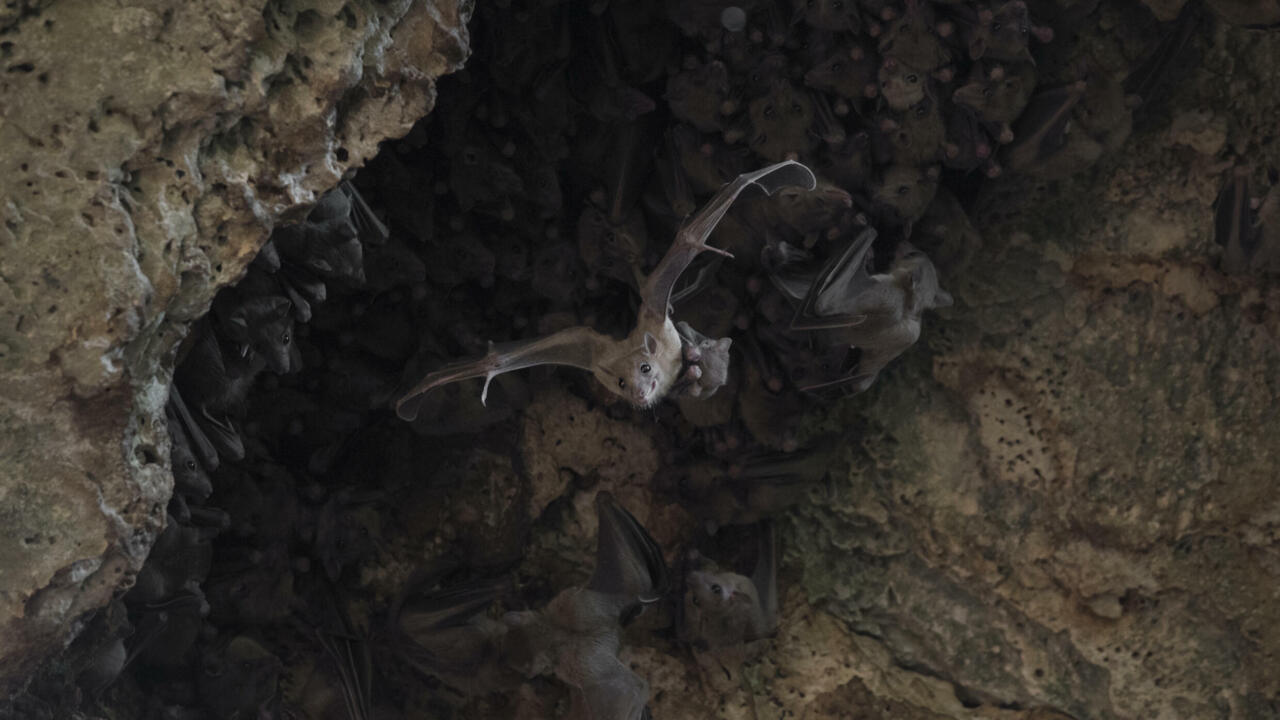A new study published in the journal Current Biology Wednesday by Israeli researchers shows how these mammals help their offspring acquire certain skills crucial for their survival.
In this case a species called Egyptian fruit bat, coming out at night in search of figs.
"How animals, including humans, learn behavioral skills is a fundamental question," Yossi Yovel, a scientist at Tel Aviv University and co-author of the study, told AFP.
"We know animals do amazing things. Bats travel dozens of kilometers every night to look for food, and we've always wondered how they learn to do it," he said.
Many species of bats carry their young as they fly, but doing so costs them energy, which can weigh up to 40% of the mother's weight.
And the benefits were little known until now.
- GPS -
To clarify them, Yossi Yovel and his colleagues placed miniature GPS on dozens of mother-child pairs.
And they were able to identify certain characteristics.
“At the beginning, the mother and her calf are constantly tied up, they fly together and the mother carries the calf all night,” between her first and third week of life, explains Aya Goldshtein, co-author of the study.
Then the mother transports her young to a place a few kilometers from their colony, where she drops him off.
During this period, between three and ten weeks, she comes back constantly to check that he is doing well, to feed him and to help him warm up.
Between eight to ten weeks, the cub begins to fly alone to the places where it was deposited, and to return to its perch before dawn - even if its mother continues to keep an eye on it.
“Imagine having a teenager at home - he's already pretty independent, but you also want to make sure he's not doing anything silly, like not coming home at the end of the night,” says Aya Goldshtein.
Then, beyond ten weeks, the young bats use these known places as starting points to independently explore the territory, in search of new fruit trees.
These places also serve as landmarks to help them find their way back.
Researchers have also bred bats without their mothers.
Result: they could not return to their cave before sunrise.
The places where mothers drop off their young also help to find them in case of need.
"These trees are a bit like meeting places for children lost in amusement parks", compares Yossi Yovel.
By serving as a retreat, these rallying points can also help escape predators, such as owls.
- A teaching?
-
"The little one learns while being carried upside down", also notes the co-author Lee Harten.
It is possible that "his eyes are open and he is gathering information by being passively transferred" from one place to another.
Which suggests that his brain is reconstructing a visual image the right way up.
The scientist said she was happy to be able to contribute to a better understanding of how animals help their young to learn - especially bats, which make up a fifth of mammals on Earth but remain under-studied.
However, researchers remain hesitant to say that mothers "teach" things to their offspring, a word the scientific community sees as anthropomorphism.
"To prove a teaching, you need an intention to do it, and it's hard to demonstrate in animals" since it is not possible to simply ask them, explains Yossi Yovel.
"I could call it teaching, but to be safe we say the little ones are put in a position that allows them to learn."
© 2021 AFP

